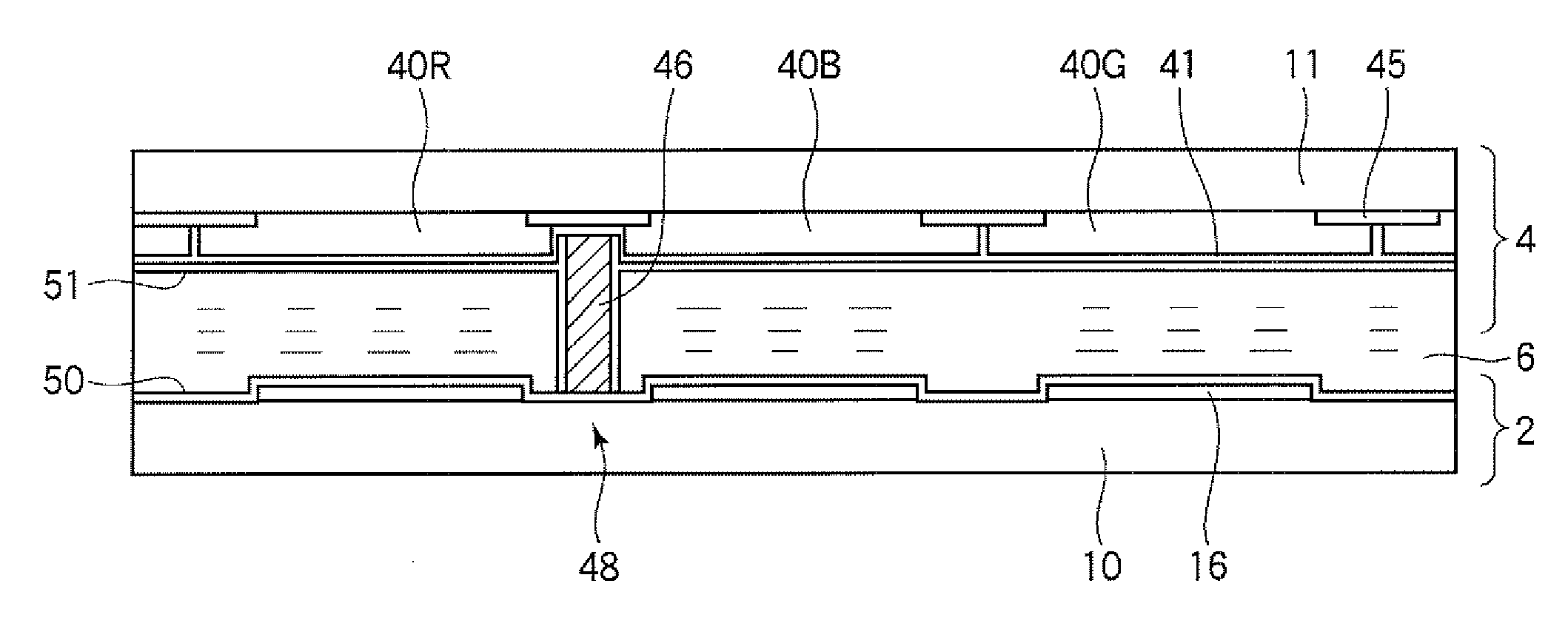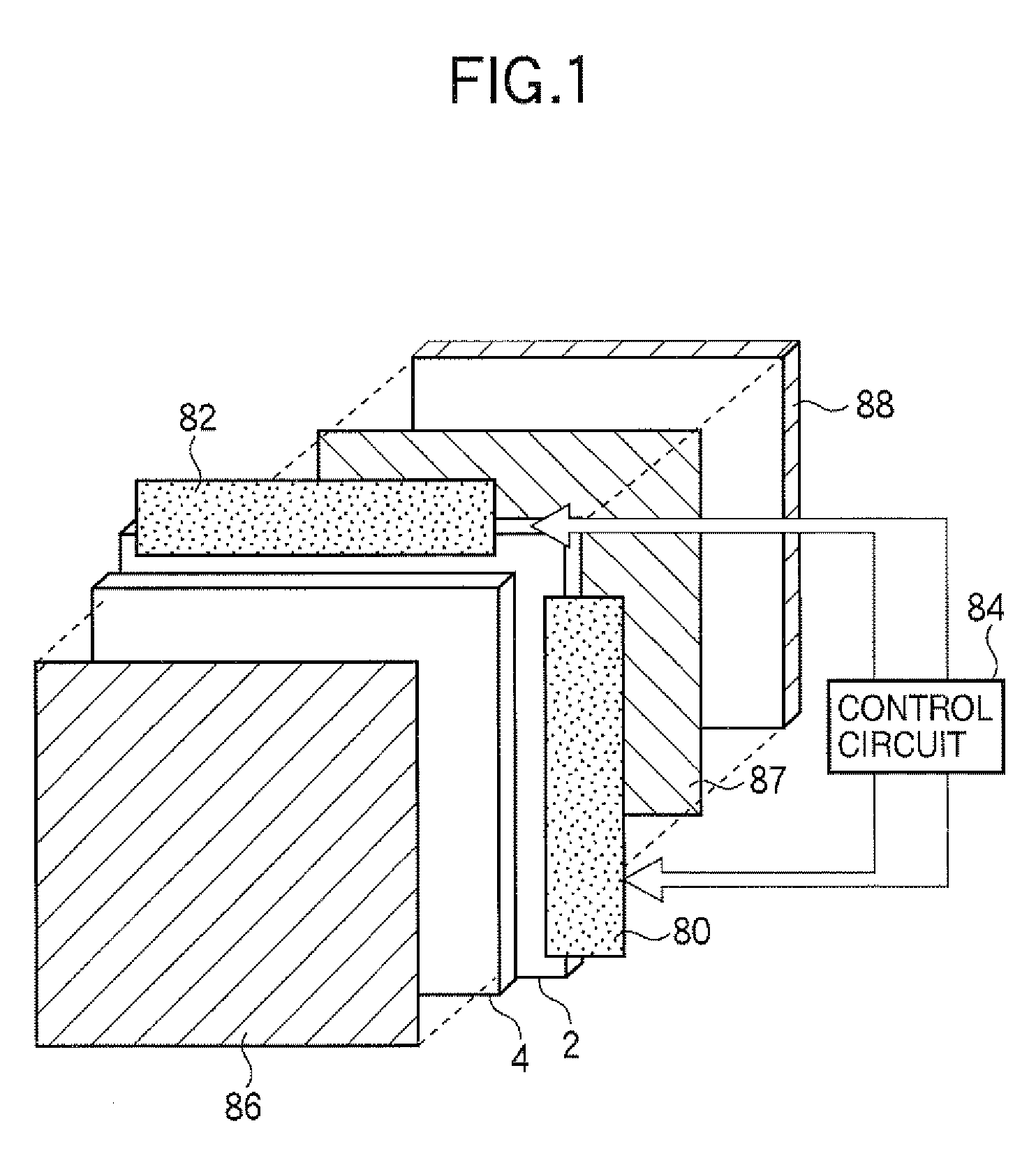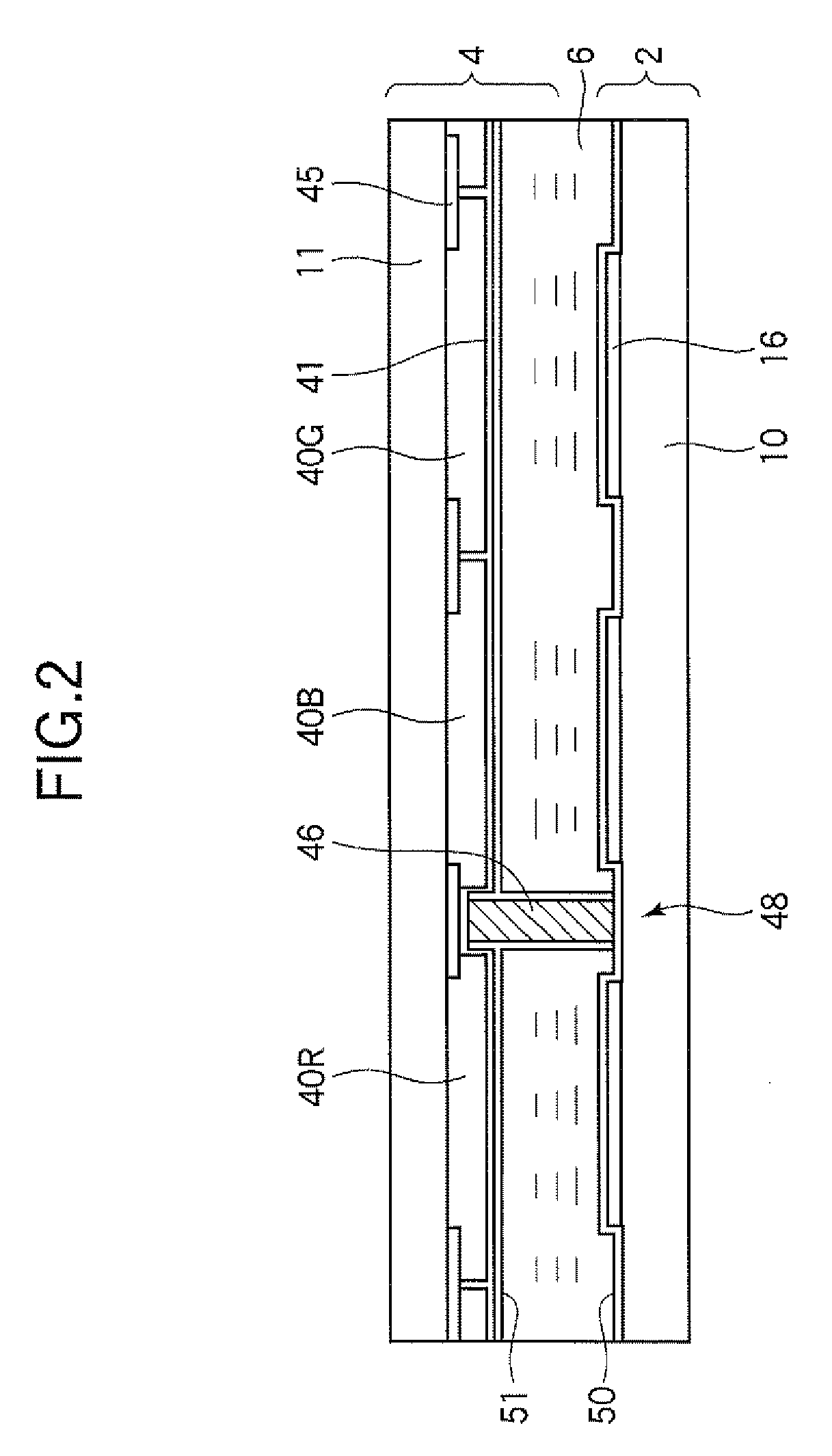Substrate for liquid crystal display device and liquid crystal display device including the same
- Summary
- Abstract
- Description
- Claims
- Application Information
AI Technical Summary
Benefits of technology
Problems solved by technology
Method used
Image
Examples
example 1
[0033]An example of forming the resin spacer layer 46 on the CF substrate 4 side will be described. FIG. 5 is a diagram illustrating a configuration of a manufactured CF substrate 4, and FIGS. 6(a) to (d) are process sectional views of a portion cut along the line A-A in FIG. 5. First, a low-reflective Cr film (a film thickness of 0.2 μm) is coated on the transparent glass substrate 11 illustrated in FIG. 6(a). Next, a resist mask is formed by coating a photo resist thereon, exposing and developing the photo resist. The Cr film is etched by using the resist mask, and then the resist mask is removed, whereby the BM 45 is formed as shown in FIG. 6(a).
[0034]Next, as shown in FIG. 6(b), an R resist (a film thickness of 1.8 μm) of a photosensitive pigment dispersion type is coated and patterned, and then a CF resin layer 40R is formed on an R pixel portion. Next, a G resist (a film thickness of 1.8 μm) of a photosensitive pigment dispersion type is coated and patterned, and then a CF res...
example 2
[0040]An alignment film 51 was formed on the surface of the CF substrate 4 according to the example 1, and an alignment film 50 was formed on the surface of the TFT substrate 2 manufactured through predetermined processes. After that, a liquid crystal display device of a TN mode as shown in FIG. 2 was manufactured through processes such as a rubbing process, a seal forming process, an assembly process, a cutting process, a liquid crystal filling process, a sealing process, and a polarizer attachment process.
[0041]Since an organic film other than the alignment film 50 is not formed on the TFT substrate 2 side of the manufactured liquid crystal display device, the structure 48 has a structure not including organic materials other than the resin spacer layer 46 and the alignment films 50 and 51. The alignment films 50 and 51 have a very small film thickness of about 0.1 μm, and the films have almost no influence on the characteristics of the structure 48. For this reason, the structure...
example 3
[0042]An example of applying the embodiment to a liquid crystal display device of MVA mode will be described. FIG. 8 shows a sectional configuration of a liquid crystal display device according to the example. As shown in FIG. 8, a linear protrusion 54 is formed as an alignment regulating structure for regulating an alignment direction of the liquid crystal 6 on the CF substrate 4. A slit (in which the ITO film is removed) 52 is formed as an alignment regulating structure on the TFT substrate 2. For example, the liquid crystal 6 has a negative dielectric anisotropy. The structure 48 has a structure not including organic materials other than the resin spacer layer 46 and the alignment film 50 and 51.
[0043]Next, by using an ODF method in the liquid crystal filling process, a manufacturing method of the liquid crystal display device according to the example will be described. FIG. 9 is a diagram illustrating a manufacturing method of the liquid crystal display panel using the ODF metho...
PUM
 Login to View More
Login to View More Abstract
Description
Claims
Application Information
 Login to View More
Login to View More - R&D
- Intellectual Property
- Life Sciences
- Materials
- Tech Scout
- Unparalleled Data Quality
- Higher Quality Content
- 60% Fewer Hallucinations
Browse by: Latest US Patents, China's latest patents, Technical Efficacy Thesaurus, Application Domain, Technology Topic, Popular Technical Reports.
© 2025 PatSnap. All rights reserved.Legal|Privacy policy|Modern Slavery Act Transparency Statement|Sitemap|About US| Contact US: help@patsnap.com



